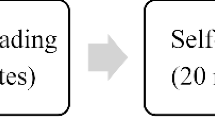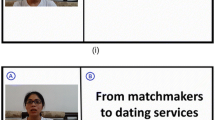Abstract
Since recognition technology has been widely used to support learners' language learning, it is necessary to have a framework that can support the implementation of anything-to-text recognition technology, such as speech-to-text recognition, image-to-text recognition, body movement-to-text recognition, emotion-to-text recognition, and location-to-text recognition, into learning designs. Therefore, in this study, we aim to review published articles related to anything-to-text recognition in language learning from 2011 to 2020 and propose an anything-to-text recognition framework. A total of 48 articles passed the selection process of this study. The results showed that most of the published articles focused on English language learning and recruited university students to participate in their studies. In addition, most of the articles aimed to foster learners' listening skills, and very few of them paid attention to writing skills. Speech-to-text recognition was commonly used to help speaking and listening skills. Image-to-text recognition was usually used to help reading and listening skills. Body movement-to-text, emotion-to-text, and location-to-text recognition technologies were rarely used; however, these also had the potential to support language learning. Based on these findings, an anything-to-text recognition framework should consist of three important layers, namely learning representations, recognition accuracy, and learning effects with regard to learners' needs and imaginations in language learning supported by recognition technologies. Furthermore, this study also highlights the features of research trends and provides suggestions for researchers in this field.

Similar content being viewed by others
Data availability
The data that support the findings of this study are available on request from the corresponding author, Siska Wati Dewi Purba.
References
Ahn, T., & Lee, S. M. (2016). User experience of a mobile speaking application with automatic speech recognition for EFL learning. British Journal of Educational Technology, 47(4), 778–786. https://doi.org/10.1111/bjet.12354
Arcon, N., Klein, P. D., & Dombroski, J. D. (2017). Effects of dictation, speech to text, and handwriting on the written composition of elementary school english language learners. Reading & Writing Quarterly, 33(6), 533–548. https://doi.org/10.1080/10573569.2016.1253513
Asher, J. J. (1969). The total physical response approach to second language learning. The Modern Language Journal, 53(1), 3–17.
Bain, K., Basson, S. H., & Wald, M. (2002). Speech recognition in university classrooms, 192. https://doi.org/10.1145/638281.638284
Bayat, N. (2014). The effect of the process writing approach on writing success and anxiety. Educational Sciences: Theory & Practice. https://doi.org/10.12738/estp.2014.3.1720
Brunner, A. (2013). Automatic recognition of speech, thought, and writing representation in German narrative texts. Literary and Linguistic Computing, 28(4), 563–575.
Călin, A. D. (2016). Variation of pose and gesture recognition accuracy using two kinect versions. 2016 International Symposium on Innovations in Intelligent Systems and Applications (INISTA).
Castañeda, D. A. (2011). The effects of instruction enhanced by video/photo blogs and wikis on learning the distinctions of the Spanish preterite and imperfect. Foreign Language Annals, 44(4), 692–711.
Caute, A., & Woolf, C. (2016). Using voice recognition software to improve communicative writing and social participation in an individual with severe acquired dysgraphia: An experimental single-case therapy study. Aphasiology, 30(2–3), 245–268.
Chen, C. M., & Lee, T. H. (2011). Emotion recognition and communication for reducing second-language speaking anxiety in a web-based one-to-one synchronous learning environment. British Journal of Educational Technology, 42(3), 417–440. https://doi.org/10.1111/j.1467-8535.2009.01035.x
Chen, H. H. J. (2011). Developing and evaluating an oral skills training website supported by automatic speech recognition technology. ReCALL, 23(1), 59–78. https://doi.org/10.1017/s0958344010000285
Cucchiarini, C., Van Doremalen, J., & Strik, H. (2008). DISCO: Development and Integration of Speech technology into Courseware for language learning. Proceedings of the Annual Conference of the International Speech Communication Association, INTERSPEECH (pp. 2791–2794). https://doi.org/10.21437/interspeech.2008-472
Cummins, C., Pellicano, E., & Crane, L. (2020). Autistic adults’ views of their communication skills and needs. International Journal Of Language & Communication Disorders / Royal College Of Speech & Language Therapists, 55(5), 678–689. https://doi.org/10.1111/1460-6984.12552
de Vries, B. P., Cucchiarini, C., Bodnar, S., Strik, H., & van Hout, R. (2014). Spoken grammar practice and feedback in an ASR-based CALL system. Computer Assisted Language Learning, 28(6), 550–576. https://doi.org/10.1080/09588221.2014.889713
Delia Calin, A. (2016). Variation of pose and gesture recognition accuracy using two kinect versions. Proceedings of the 2016 International Symposium on Innovations in Intelligent SysTems and Applications, INISTA 2016. https://doi.org/10.1109/INISTA.2016.7571858
Estes, C., & Bloom, R. L. (2010). Using voice recognition software to treat dysgraphia in a patient with conduction aphasia. Aphasiology, 25(3), 366–385. https://doi.org/10.1080/02687038.2010.493294
Evers, K., & Chen, S. (2020). Effects of an automatic speech recognition system with peer feedback on pronunciation instruction for adults. Computer Assisted Language Learning, 1-21. https://doi.org/10.1080/09588221.2020.1839504
Fedra, E., & Schmidt, M. F. H. (2018). Preschoolers understand the moral dimension of factual claims. Frontiers in Psychology, 9, 1841. https://doi.org/10.3389/fpsyg.2018.01841
Gardenfors, P. (2017). Demonstration and pantomime in the evolution of teaching. Frontiers in Psychology, 8, 415. https://doi.org/10.3389/fpsyg.2017.00415
Gärdenfors, P. (2021). Demonstration and pantomime in the evolution of teaching and communication. Language & Communication, 80, 71–79. https://doi.org/10.1016/j.langcom.2021.06.001
Greenberg, C. S., Mason, L. P., Sadjadi, S. O., & Reynolds, D. A. (2020). Two decades of speaker recognition evaluation at the national institute of standards and technology. Computer Speech & Language, 60, 101032. https://doi.org/10.1016/j.csl.2019.101032
Haug, K. N., & Klein, P. D. (2017). The effect of speech-to-text technology on learning a writing strategy. Reading & Writing Quarterly, 34(1), 47–62. https://doi.org/10.1080/10573569.2017.1326014
Hwang, W. Y., Shadiev, R., Kuo, T. C. T., & Chen, N. S. (2012). Effects of speech-to-text recognition application on learning performance in synchronous cyber classrooms. Educational Technology and Society, 15(1), 367–380.
Hwang, W. Y., Chen, H. S. L., Shadiev, R., Huang, R. Y. M., & Chen, C. Y. (2014). Improving English as a foreign language writing in elementary schools using mobile devices in familiar situational contexts. Computer Assisted Language Learning, 27(5), 359–378. https://doi.org/10.1080/09588221.2012.733711
Hwang, W. Y., Shadiev, R., Hsu, J. L., Huang, Y. M., Hsu, G. L., & Lin, Y. C. (2016). Effects of storytelling to facilitate EFL speaking using Web-based multimedia system. Computer Assisted Language Learning, 29(2), 215–241. https://doi.org/10.1080/09588221.2014.927367
Hwang, W. Y., Manabe, K., Cai, D. J., & Ma, Z. H. (2020). Collaborative kinesthetic english learning with recognition technology. Journal of Educational Computing Research, 58(5), 946–977. https://doi.org/10.1177/0735633119893117
Kirschner, P. A., Sweller, J., Kirschner, F., & Zambrano, R. (2018). From cognitive load theory to collaborative cognitive load theory. International Journal of Computer-Supported Collaborative Learning, 13(2), 213–233.
Kuo, T. C. T., Shadiev, R., Hwang, W. Y., & Chen, N. S. (2012). Effects of applying STR for group learning activities on learning performance in a synchronous cyber classroom. Computers & Education, 58(1), 600–608. https://doi.org/10.1016/j.compedu.2011.07.018
Leopold, C., Mayer, R. E., & Dutke, S. (2019). The power of imagination and perspective in learning from science text. Journal of Educational Psychology, 111(5), 793–808. https://doi.org/10.1037/edu0000310
Lin, H. C. K., Wang, C. H., Chao, C. J., & Chien, M. K. (2012). Employing textual and facial emotion recognition to design an affective tutoring system. Turkish Online Journal of Educational Technology-TOJET, 11(4), 418–426.
Liu, H. C. (2020). Using eye-tracking technology to explore the impact of instructional multimedia on CFL Learners’ Chinese Character Recognition. The Asia-Pacific Education Researcher, 30(1), 33–46. https://doi.org/10.1007/s40299-020-00512-2
Liu, Y., Jang, B. G., & Roy-Campbell, Z. (2018). Optimum input mode in the modality and redundancy principles for university ESL students’ multimedia learning. Computers & Education, 127, 190–200.
Maine, F., & Shields, R. (2015). Developing reading comprehension with moving image narratives. Cambridge Journal of Education, 45(4), 519–535.
Matthews, J., O’Toole, J. M., & Chen, S. (2016). The impact of word recognition from speech (WRS) proficiency level on interaction, task success and word learning: design implications for CALL to develop L2 WRS. Computer Assisted Language Learning, 30(1–2), 22–43. https://doi.org/10.1080/09588221.2015.1129348
Mayer, R., & Mayer, R. E. (2005). The Cambridge handbook of multimedia learning. Cambridge University Press.
Mees, I. M., Dragsted, B., Hansen, I. G., & Jakobsen, A. L. (2013). Sound effects in translation. Target International Journal of Translation Studies, 25(1), 140–154.
Mirzaei, M. S., Akita, Y., & Kawahara, T. (2014). Partial and synchronized caption generation to develop second language listening skill. Workshop Proceedings of the 22nd International Conference on Computers in Education (pp. 13–23). ICCE 2014.
Neumann, M. M., Acosta, C., & Neumann, D. L. (2014). Young children’s visual attention to environmental print as measured by eye tracker analysis. Reading Research Quarterly, 49(2), 157–167. https://doi.org/10.1002/rrq.66
Neviarouskaya, A., Prendinger, H., & Ishizuka, M. (2010). Affect analysis model: novel rule-based approach to affect sensing from text. Natural Language Engineering, 17(1), 95–135. https://doi.org/10.1017/s1351324910000239
Nguyen, T. H., Hwang, W. Y., Pham, X. L., & Ma, Z. H. (2018). User-oriented EFL speaking through application and exercise: Instant speech translation and shadowing in authentic context. Educational Technology and Society, 21(4), 129–142.
Nguyen, T. H., Hwang, W. Y., Pham, X. L., & Pham, T. (2020). Self-experienced storytelling in an authentic context to facilitate EFL writing. Computer Assisted Language Learning, 0(0), 1–30. https://doi.org/10.1080/09588221.2020.1744665
Piaget, J. (1976). Piaget's theory. Piaget and his school (pp. 11-23). Springer.
Ranchal, R., Taber-Doughty, T., Guo, Y., Bain, K., Martin, H., Robinson, J. P., & Duerstock, B. S. (2013). Using speech recognition for real-time captioning and lecture transcription in the classroom. IEEE Transactions on Learning Technologies, 6(4), 299–311.
Rogerson-Revell, P. M. (2021). Computer-assisted pronunciation training (CAPT): Current issues and future directions. RELC Journal, 52(1), 189–205.
Schmitterer, A. M. A., & Schroeder, S. (2018). The recognition of letters in emergent literacy in German: evidence from a longitudinal study. Journal of Research in Reading, 41(3), 423–437. https://doi.org/10.1111/1467-9817.12116
Shadiev, R., & Sun, A. (2019). Using texts generated by STR and CAT to facilitate student comprehension of lecture content in a foreign language. Journal of Computing in Higher Education, 32(3), 561–581. https://doi.org/10.1007/s12528-019-09246-7
Shadiev, R., Sun, A., & Huang, Y. M. (2018). A study of the facilitation of cross-cultural understanding and intercultural sensitivity using speech‐enabled language translation technology. British Journal of Educational Technology, 50(3), 1415–1433. https://doi.org/10.1111/bjet.12648
Shadiev, R., Wu, T. T., & Huang, Y. M. (2020). Using image-to-text recognition technology to facilitate vocabulary acquisition in authentic contexts. ReCALL, 32(2), 195–212. https://doi.org/10.1017/s0958344020000038
Shadiev, R., Wu, T. T., Sun, A., & Huang, Y. M. (2017). Applications of speech-to-text recognition and computer-aided translation for facilitating cross-cultural learning through a learning activity: issues and their solutions. Educational Technology Research and Development, 66(1), 191–214. https://doi.org/10.1007/s11423-017-9556-8
Strauber, C. B., Sorcar, P., Howlett, C., & Goldman, S. (2020). Using a picture-embedded method to support acquisition of sight words. Learning and Instruction, 65, 101248. https://doi.org/10.1016/j.learninstruc.2019.101248
Sun, J. C., Chang, K. Y., & Chen, Y. H. (2015). GPS sensor-based mobile learning for English: an exploratory study on self-efficacy, self-regulation and student achievement. Research and Practice in Technology Enhanced Learning, 10(1), 23. https://doi.org/10.1186/s41039-015-0024-y
Tajtáková, M., & Arias-Aranda, D. (2008). Targeting university students in audience development strategies for opera and ballet. The Service Industries Journal, 28(2), 179–191. https://doi.org/10.1080/02642060701842191
Wang, F., Hwang, W. Y., Li, Y. H., Chen, P. T., & Manabe, K. (2019). Collaborative kinesthetic EFL learning with collaborative total physical response. Computer Assisted Language Learning, 32(7), 745–783. https://doi.org/10.1080/09588221.2018.1540432
Wang, L., Huynh, D. Q., & Koniusz, P. (2020). A comparative review of recent kinect-based action recognition algorithms. IEEE Transactions on Image Processing, 29, 15–28. https://doi.org/10.1109/TIP.2019.2925285
Xu, C., & Xia, J. (2019). Scaffolding process knowledge in L2 writing development: insights from computer keystroke log and process graph. Computer Assisted Language Learning, 34(4), 583–608. https://doi.org/10.1080/09588221.2019.1632901
Author information
Authors and Affiliations
Corresponding author
Ethics declarations
Competing interests
The authors report there are no competing interests to declare.
Additional information
Publisher’s note
Springer Nature remains neutral with regard to jurisdictional claims in published maps and institutional affiliations.
Rights and permissions
About this article
Cite this article
Hwang, WY., Nguyen, VG. & Purba, .W.D. Systematic survey of anything-to-text recognition and constructing its framework in language learning. Educ Inf Technol 27, 12273–12299 (2022). https://doi.org/10.1007/s10639-022-11112-6
Received:
Accepted:
Published:
Issue Date:
DOI: https://doi.org/10.1007/s10639-022-11112-6




